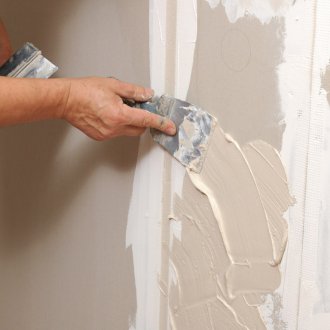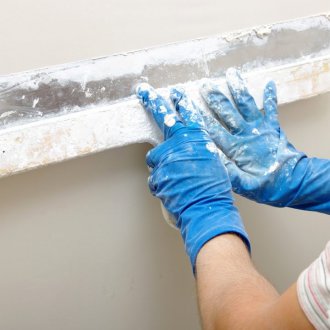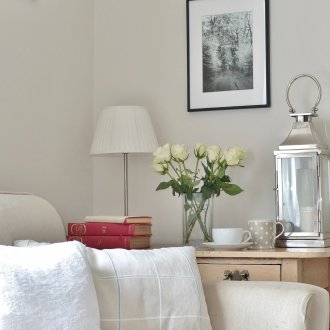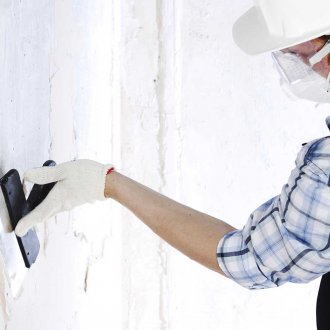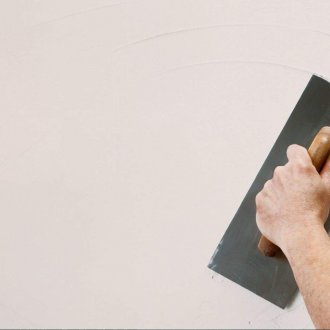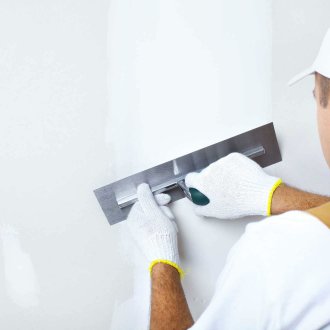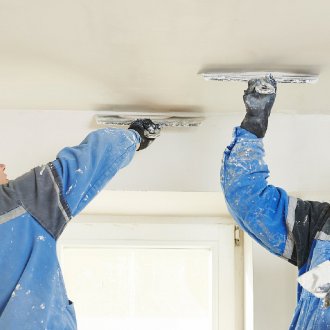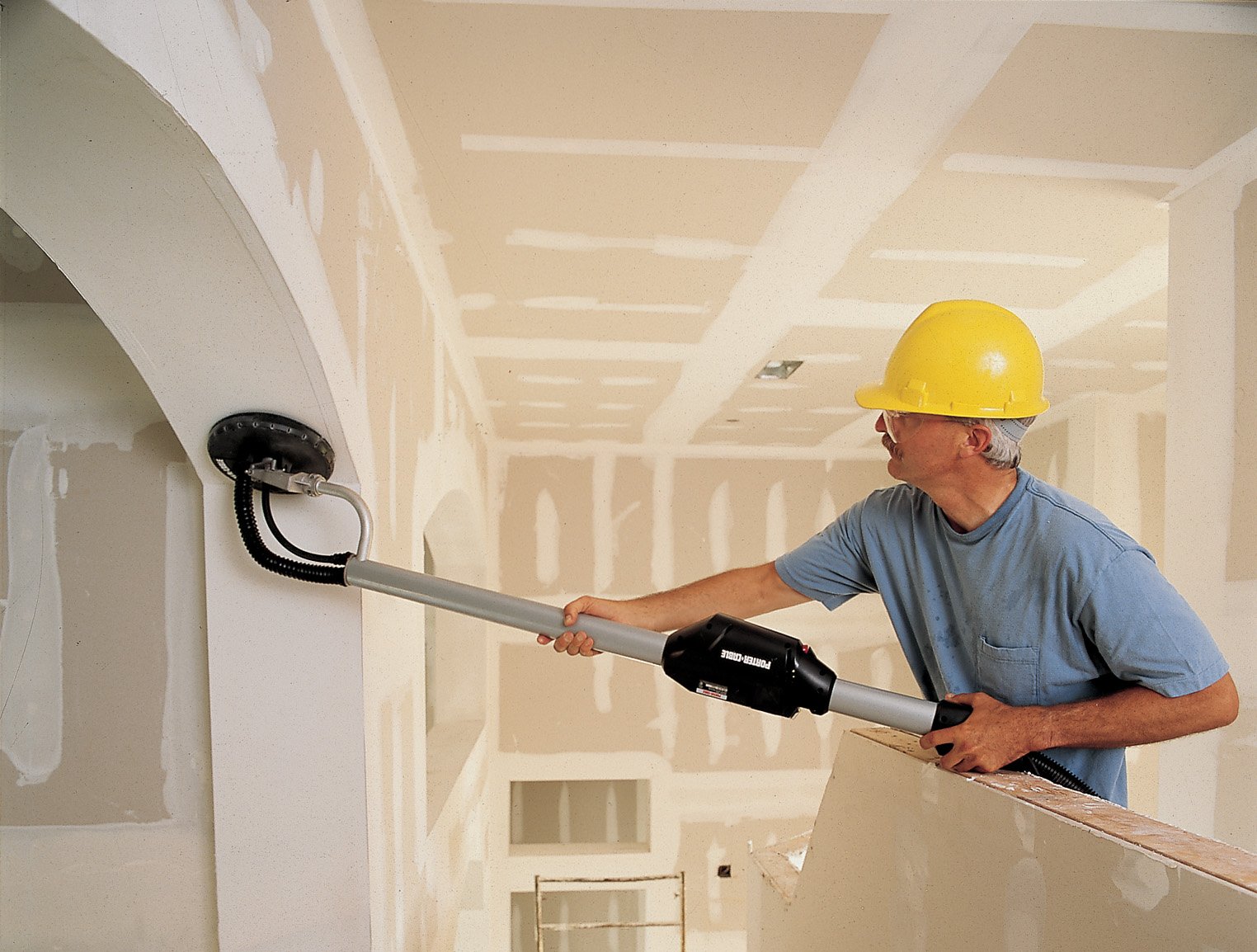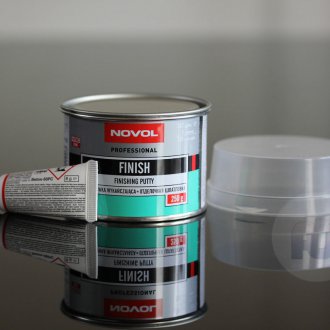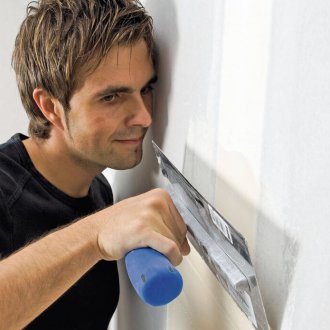Finishing putty: varieties, characteristics, application principle
Content
Not so long ago, surface finishing in a room consisted of a simple whitewashing, or wallpapering, on a newspaper layer. If cracks were observed in the walls, then they were repaired with cement compounds or alibastra. Now, for the finishing work, there is a certain algorithm in which the finishing putty of the walls is an obligatory step, thanks to it, a perfectly smooth surface is obtained.
What is finishing putty intended for?
Finishing putty is the stage of rough finishing, which involves obtaining a perfectly even coating for further application of paint, decorative plaster, or wallpapering. Thanks to the application of the finishing, putty layer, the walls become smooth, resistant to high humidity, to the appearance and spread of fungal formations and mechanical damage.
Finishing putty is a soft, uniform, elastic mixture without coarse impurities. The finishing composition is applied with a layer of not more than 2 mm. Recently, a mixture has appeared on the market - superfinishing putty, which is applied with a layer of 0, 3 mm, it masks microscopic scratches from the spatula.
How to make the right choice of finishing putty? The material should have the following qualities:
- the composition should easily lie on the walls without sticking to the tool;
- even a minimal layer should hide defects of the base layer;
- must be crack resistant;
- have a uniform white color.
If extraneous inclusions were found in the finishing shaleva during application, the material is of inadequate quality and must be replaced.
Types and characteristics of finishing putty
For the finishing of ceilings and walls produce three types of material:
- Finishing gypsum.
- Polymer (latex and acrylic).
- Cement.
Thanks to modern innovative developments, gypsum mixtures for finishing have the following advantages:
Gypsum plaster
These finishing mixes have the following characteristics:
- profitability - material consumption of 1.1 kg per square meter;
- does not shrink;
- applied evenly;
- has a fraction size of 0.15 mm;
- quick drying.
The material has disadvantages:
- not suitable for finishing wet rooms;
- the price of the material is much more expensive than cement.
Most often, the material is used as a finishing plasterboard putty. The composition has special additives that protect the surface from aggressive effects. Drying time - half an hour.
Polymer finishing putty
This material appeared on the market not so long ago, but its popularity is growing exponentially. Many masters advise using this particular material, since the polymer finish putty has a lot of positive properties:
- resistant to deformation;
- does not shrink;
- has high adhesion to mineral surfaces;
- possesses vapor tightness therefore it can be used at external works;
- uniform drying gives a guarantee of a quality surface;
- work with finishing putty will not be there, even for a beginner;
- not afraid of mechanical damage.
In other words, this is one of the best finishing materials, which has only one drawback, high cost.
Cement based putty
Cement finishing putty is used in all types of finishing work - both internal and external. This is a fine-grained composition, which is used for filling concrete and brick surfaces. The composition has several advantages:
- Strength.
- Water resistance.
- Resistance to temperature extremes.
- Easy to apply.
- Low cost.
Material disadvantages:
- Shrinks.
- Inelasticity.
- Cracks may form.
- It dries for a long time.
Cement putty, finishing, due to its properties it is used in wet rooms, such as kitchens and bathrooms.
Purpose and use of material
Starting putty - the first layer of finish after plastering. This material has a large fraction and high strength. This type of material has high adhesion, regardless of what surface it is applied to.
When choosing a starting putty, it is necessary to take into account the thickness of the layer, which is acceptable during application, the maximum allowable layer is 25 mm.
Finishing moisture resistant putty - applied by the second layer. This material is applied with a layer of no higher than 4 mm and creates a perfectly even surface on which any decorative material is applied to create a design. Due to its softness, finishing putty for painting is easily processed with a diamond mesh or sandpaper.
Universal mixtures are multicomponent, complex compositions that can be used both for the base layer and as a finishing putty on the ceiling and walls. For non-professionals, this is the most convenient material, since one composition produces all types of putty. There are not many such compounds on the market; their cost is quite high.
Rules for applying finishing putty
Puttying work is carried out in stages:
- before filling the walls, surface preparation is carried out - dust removal, removal of mold, dirt, applying soil;
- plastering walls along beacons if the surface curvature is more than 1 cm;
- application of finishing putty;
- grinding.
For different materials that will be used for finishing, there are nuances on how to apply it on the finish walls:
- for vinyl and non-woven wallpaper it will be quite enough to apply one layer of putty, when using paper, thin roll materials, two layers will have to be done;
- if it is supposed to be painted with acrylic or polymer paint, then at least three layers of putty will be needed;
- if the paint will be light shades, then it is worth using a superfinishing composition on a polymer basis.
The front finishing white putty is applied to the surface of the walls during exterior decoration, only at positive air temperature. Humidity in this situation does not matter.
How to apply finishing putty?
First of all, you need to prepare the mixture according to the manufacturer's instructions. Pour the right amount of water into a clean container, into which you pour the mixture and mix well with a drill with a whisk. Some formulations, especially polymer ones, must be proofed, after which the mixture is re-mixed.
Then with a small spatula “help”, 10 cm wide, collect a small amount of the mixture and distribute it along the edge of a wide (35-40 cm) spatula.
Attach the tool to the surface and smoothly begin to distribute the material on the surface. First, the movement is made vertically, then horizontally. It is important that the finishing putty lay evenly.
It is advisable to apply the top coat of putty with a new tool, on which there are no defects in the form of nicks, rust, dirt and scratches, otherwise a flat surface will not work.
As soon as the composition is applied to the entire surface, it is left to dry for 12 hours, after which it is possible to proceed to grinding.
You can grind the finishing putty in two ways:
- dry - using a fine-grained abrasive mesh, or finely fractional sandpaper;
- wet - to give the surface perfect evenness, a wet sponge is used.
To ensure that there are no defects on the putty surface, and it turns out to be perfectly flat, use a light bulb, the light of which needs to be directed to the wall at different angles - where the shadow appears, there are defects. For painting, you need to prepare the wall very carefully, otherwise any unevenness will be visible on the wall.
Top putty rating
The most popular putties for finishing walls are:
| Type of material | Description |
|---|---|
| Ceresit CT 127 | Putty on a polymer basis, for interior decoration. Good quality at an affordable price. Easy to apply thanks to plasticity, good skinning. |
| KNAUF Multi-finish (cement-based) | Putty for the facade. Excellent material from a well-known manufacturer of building mixtures. Plasticity leaves much to be desired, but overall not bad mixes. |
| KNAUF Multi-finish gypsum | Hard putty for internal works. Excellent material that is widely used in construction work. Good elasticity, easy application. There is a small drawback - it is poorly cleaned after complete drying. |
| Vetonite | It has proven itself in the performance of finishing under decorative coatings. Minus is too high a cost. |
| Hercules | A wide range of topcoats, from plaster to polymer. All materials are of good quality, while they are inexpensive. In the market since 1997. |
| Miners | Good mixes at a low cost. |
| Eunice | Good mixes produced on the latest equipment. Excellent elasticity, ease of application to the surface, dries quickly and is well subjected to further processing. |
If when performing repairs in your apartment, it was decided to apply the finishing putty on the walls and ceiling yourself, then you should buy a universal material, since working with it is much easier.
